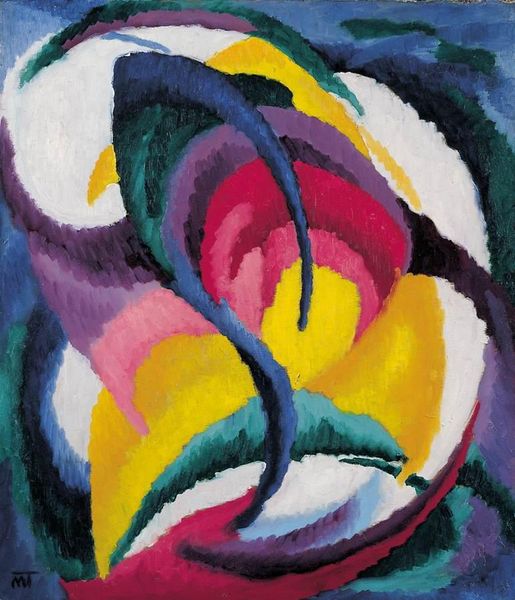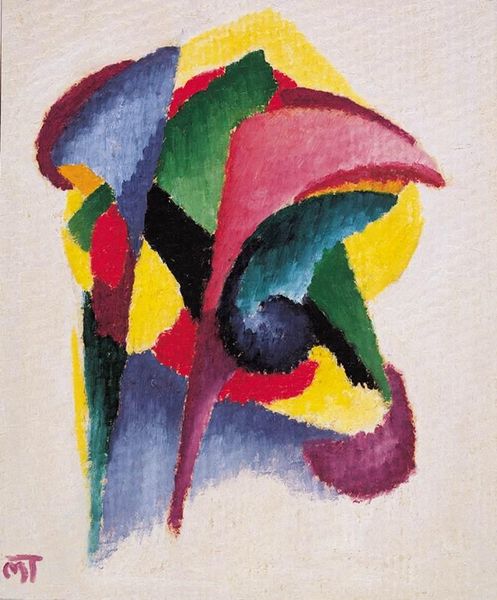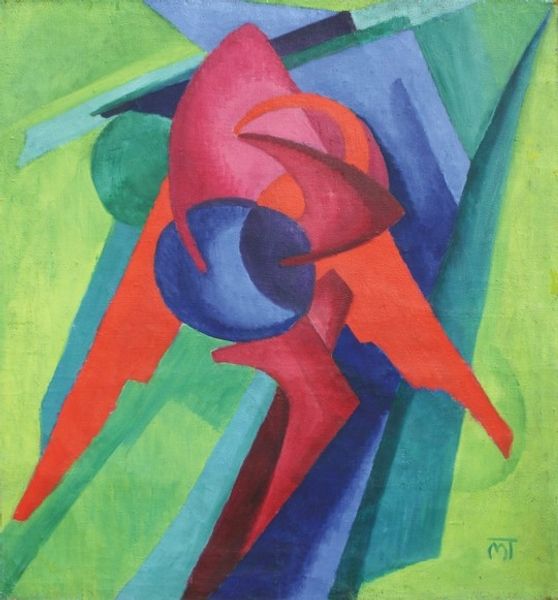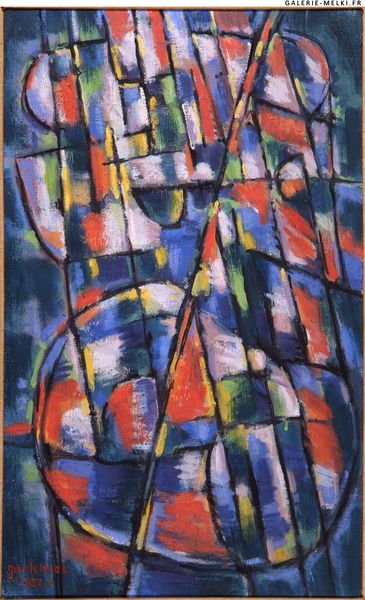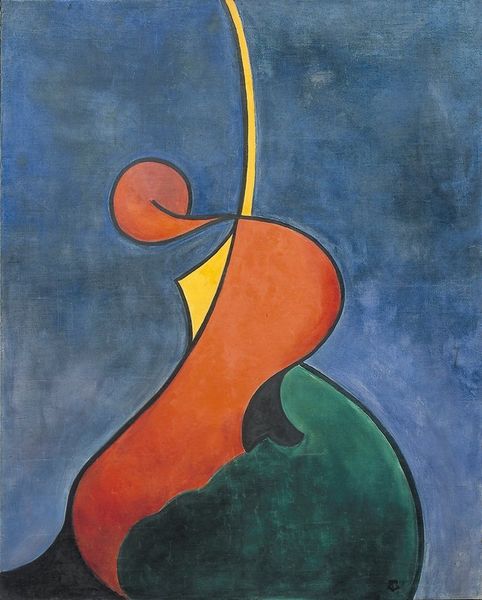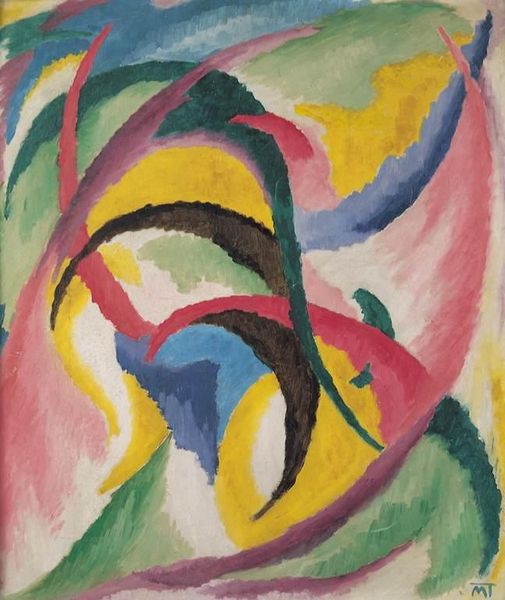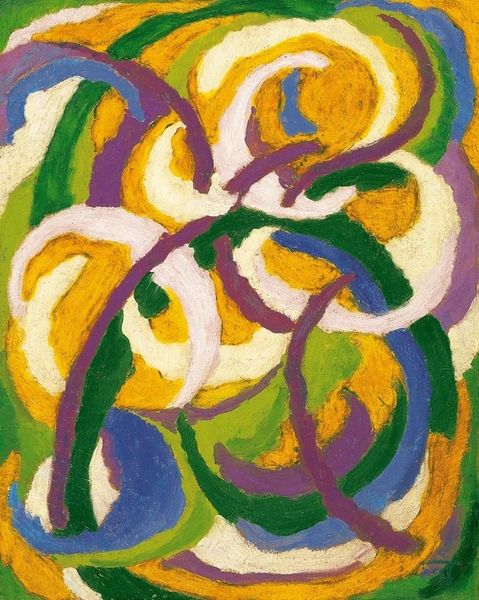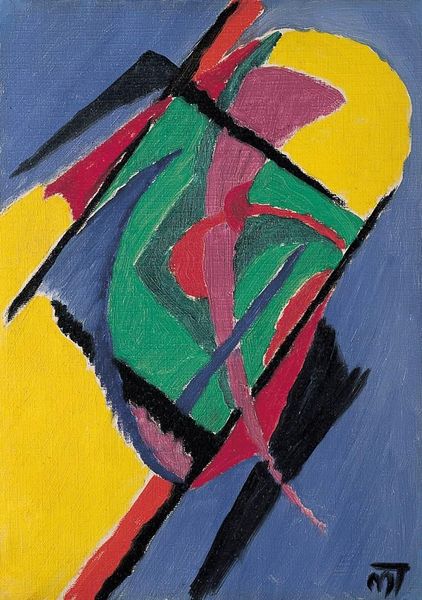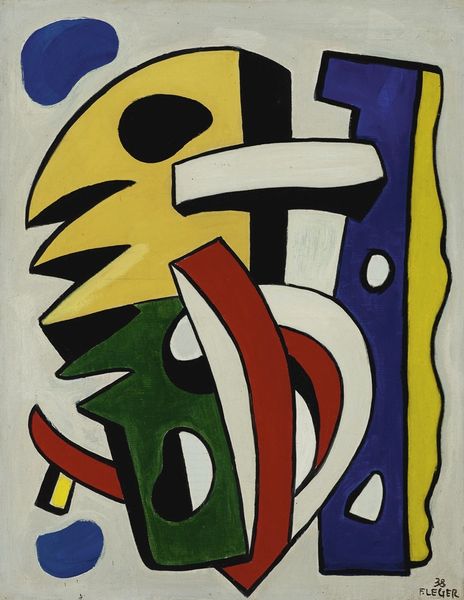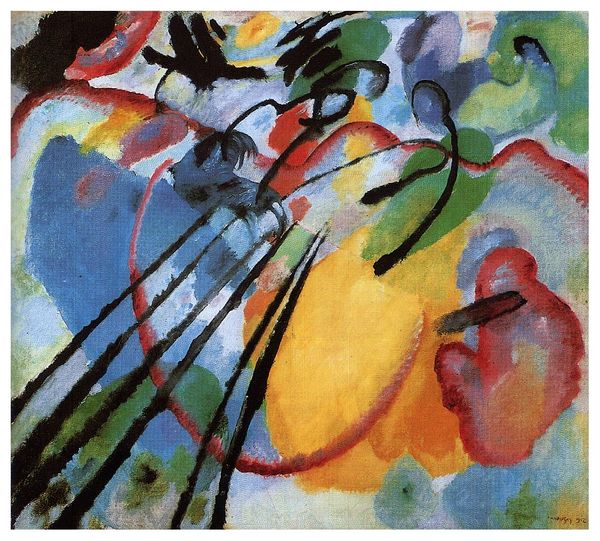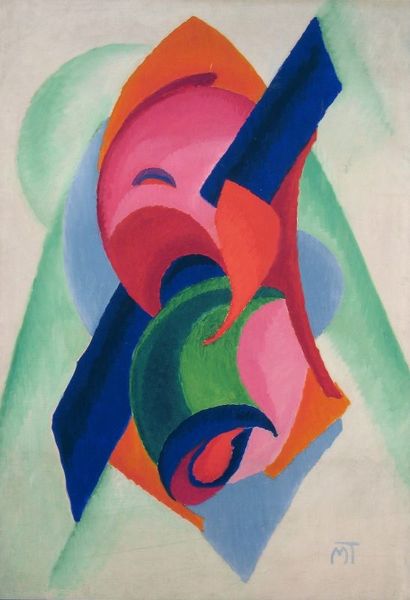
painting, oil-paint
#
non-objective-art
#
painting
#
oil-paint
#
form
#
neo expressionist
#
acrylic on canvas
#
expressionism
#
geometric-abstraction
#
abstraction
#
line
#
modernism
Copyright: Public domain US
Curator: Welcome. We're looking at Janos Mattis-Teutsch's "Composition," created in 1923. It's an oil painting, a striking example of geometric abstraction. Editor: My initial reaction? It feels like a vibrant flower, fractured and reassembled. Or maybe an otherworldly kite dancing in a very calm, pale-blue sky. Curator: The painting places Mattis-Teutsch firmly within the currents of early Modernism. His turn towards non-objective art reflects a broader European move to distill form and color down to their essentials. Abstraction was radical, a push against academic art institutions and traditional representation. Editor: You know, the bold colors against that gentle blue are just intoxicating. There’s this yearning for something bright and joyful but held in check by those severe, black lines. It almost hurts, but in a delicious way! It is joyful sorrow, which is beautiful to express.. Curator: The stark linearity is interesting, it's as if the lines are holding all that joyful potential you speak of at bay. Editor: Do you think? For me, those black lines make me feel uneasy but curious; they suggest constraint, but also possibilities—like, are we about to see all these fragments click into alignment? Perhaps something revolutionary this way comes, politically speaking. Curator: It’s interesting you read revolutionary sentiment here. Artists like Mattis-Teutsch were navigating significant political upheaval, especially in post-war Europe. Abstract art offered them a means of reflecting on change while bypassing overt political imagery, something not many could at the time.. Editor: In those early decades of the 20th century, maybe abstraction became the visual language for artists to grapple with the intangible—feelings that hadn’t been depicted or properly processed yet by other artistic means.. Curator: Perhaps you are right! Well, I feel that looking at "Composition" gives you the full spectrum of ideas circulating at the time. The push and pull between form and freedom are on full display. Editor: I’m struck by the lasting resonance of such vibrant simplicity; makes you rethink what’s actually essential in an image, doesn’t it? It inspires one to keep it simple...
Comments
No comments
Be the first to comment and join the conversation on the ultimate creative platform.
